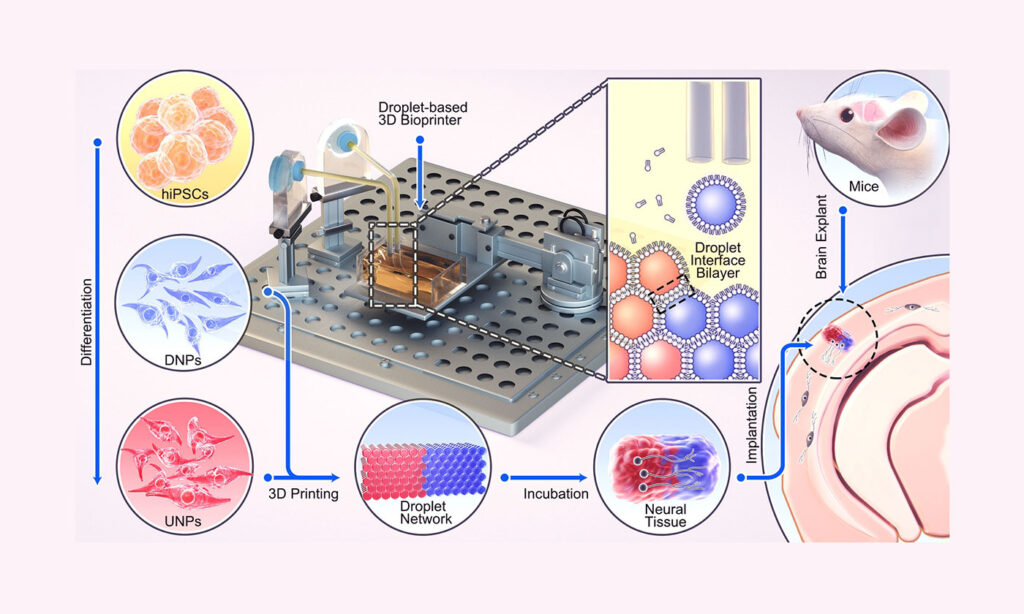Medtech
3D-Bioprinted Implants Show Promise in Model of Severe Brain Injury
Potential treatments for severe brain injury include tissue regeneration. To date, however, these treatments have shown little progress. For example, in…

Potential treatments for severe brain injury include tissue regeneration. To date, however, these treatments have shown little progress. For example, in preclinical studies, implants consisting of dissociated cells or organoids have shown only a limited ability to integrate with cerebral cortex.
In hopes of producing better implants, University of Oxford researchers have developed a 3D droplet printing technique. They have used it to fabricate engineered implants that more closely resemble cerebral cortex.

Details of this work recently appeared in Nature Communications, in an article titled, “Integration of 3D-printed cerebral cortical tissue into an ex vivo lesioned brain slice.” The article described how the technique was used to fabricate two-layered brain tissue from human neural stem cells. When implanted into mouse brain slices, the cells showed convincing structural and functional integration with the host tissue.
To build the cortical structure, the researchers used human induced pluripotent stem cells (iPSCs), which were differentiated into two different neural progenitors for two different layers of the cerebral cortex. The cells were then suspended in solution to generate two bioinks, which were then printed to produce a two-layered structure.
When the printed tissues were implanted into mouse brain slices, they showed strong integration, as demonstrated by the projection of neural processes and the migration of neurons across the implant–host boundary. The implanted cells also showed signaling activity which correlated with that of the host cells.
“Our droplet printing technique provides a means to engineer living 3D tissues with desired architectures,” said Linna Zhou, PhD, one of the study’s senior authors. “[This] brings us closer to the creation of personalized implantation treatments for brain injury.”
The researchers intend to further refine the droplet printing technique to create complex multilayered cerebral cortex tissues that more realistically mimic the human brain’s architecture. Besides their potential for repairing brain injuries, these engineered tissues might be used in drug evaluations and in studies of brain development and cognition.
The post 3D-Bioprinted Implants Show Promise in Model of Severe Brain Injury appeared first on GEN – Genetic Engineering and Biotechnology News.

ETF Talk: AI is ‘Big Generator’
Second nature comes alive Even if you close your eyes We exist through this strange device — Yes, “Big Generator” Artificial intelligence (AI) has…
Apple gets an appeals court win for its Apple Watch
Apple has at least a couple more weeks before it has to worry about another sales ban.
Federal court blocks ban on Apple Watches after Apple appeal
A federal appeals court has temporarily blocked a sweeping import ban on Apple’s latest smartwatches while the patent dispute winds its way through…














